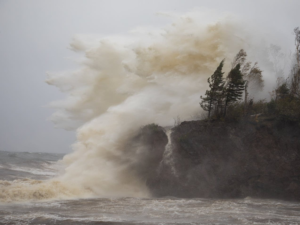Cleveland, Ohio is used to being the butt of jokes. Its famous burning river and the perennial underperformance of its football team have earned it widespread mockery and the enduring moniker “the mistake on the lake.” Once one of the nation’s five largest metros, Cleveland’s industry has bled offshore and its people have fled for suburbs and Southern climes, leaving behind a well-worn rustbelt emblem with an outsized set of legacy cultural institutions.
In 1986, movers and shakers at the United Way tried to shift this narrative with a single bold stroke. Their plan: break a Guinness world record by releasing more than one million balloons into the air as a fundraising gimmick, and show the world that Cleveland could be something more than a cheap punchline.
To do so, they contracted an LA-based balloon company that spent six months preparing for the event. A structure the size of a city block, covered with a mesh net, was set up to hold the balloons, which were filled in a single day by 2,500 volunteers. Altogether, more than 1.4 million balloons were inflated and launched into the air on September 27, 1986 — and truly, it was a sight to see.
Alas, Balloonfest ’86 was not the positive turning point Cleveland had hoped for. A simple principle had evaded the organizers: what goes up must come down. A cold front trapped the balloons close to the ground and forced many of them into the lake just offshore. The rest caused problems elsewhere: shutting down airports, clogging highways and waterways, littering the region with plastic and string. Horses in surrounding exurbs suffered “permanent injuries” when they were spooked by balloons landing in their pastures, prompting lawsuits and a payout from the event organizers. Most tragically, a Coast Guard search for two missing fishermen had to be called off due to the balloons; both men drowned. (This also prompted a lawsuit and subsequent settlement.)
Asked for comment on the event years later, the United Way said simply “we would not do a balloon launch ever again.”
You can watch a short documentary (7 minutes) about the Balloonfest incident below:

